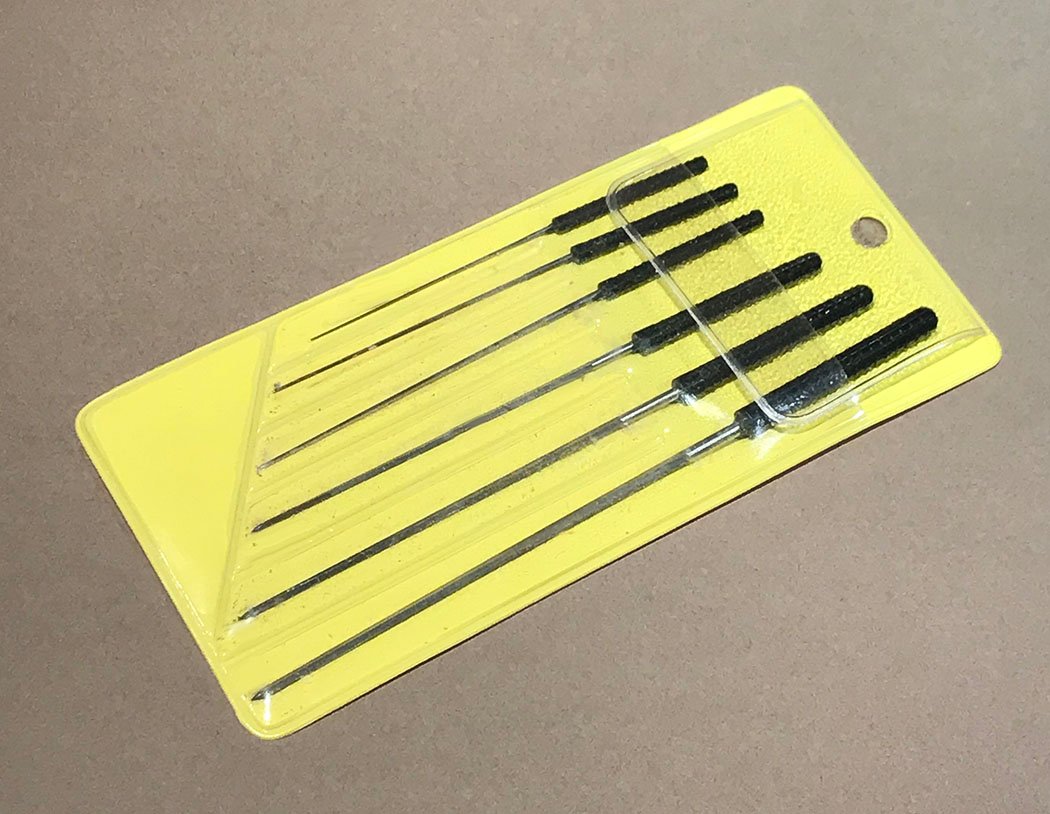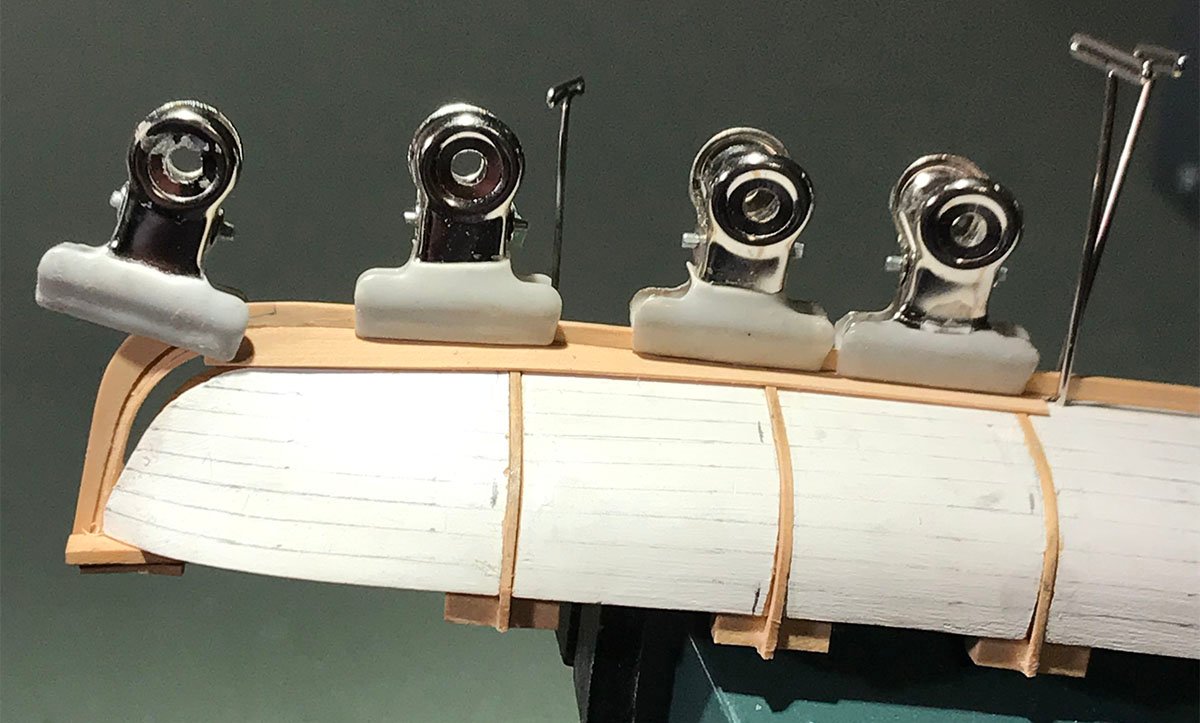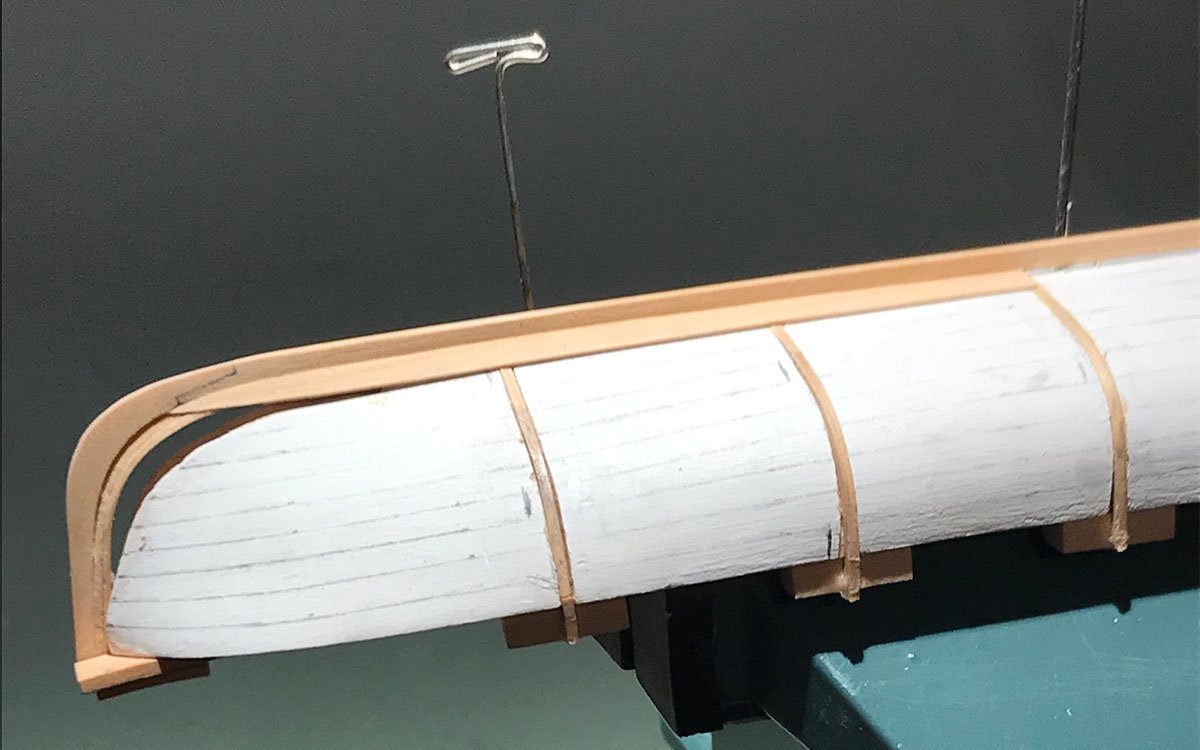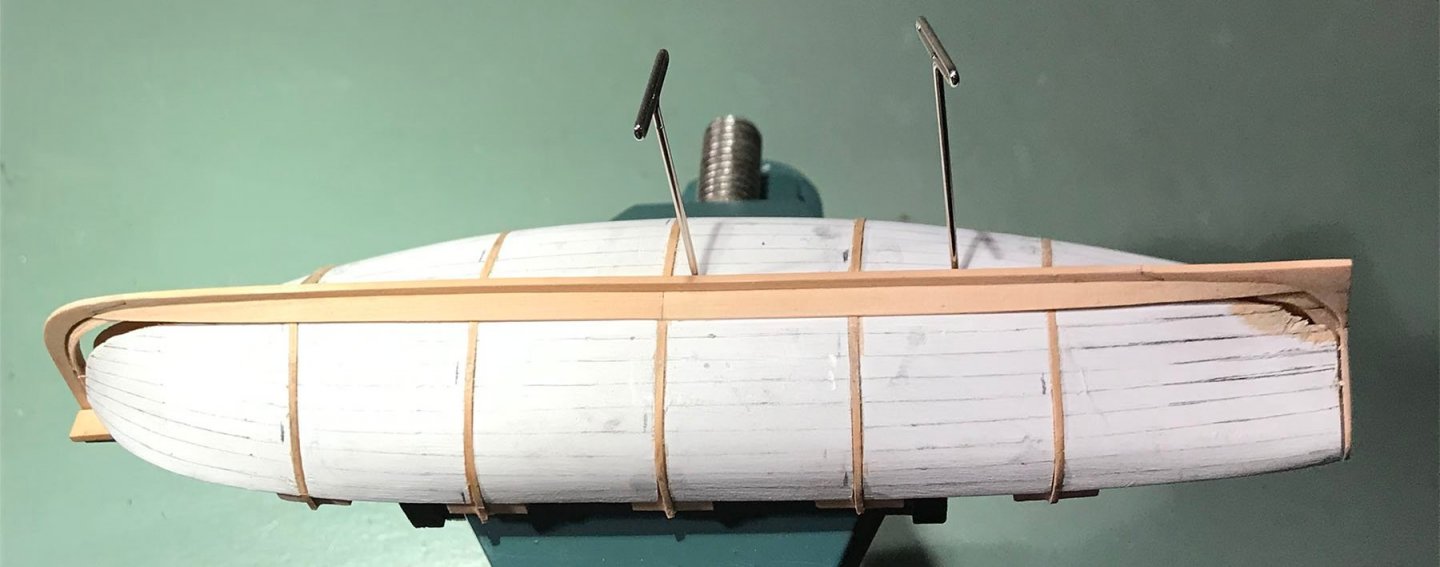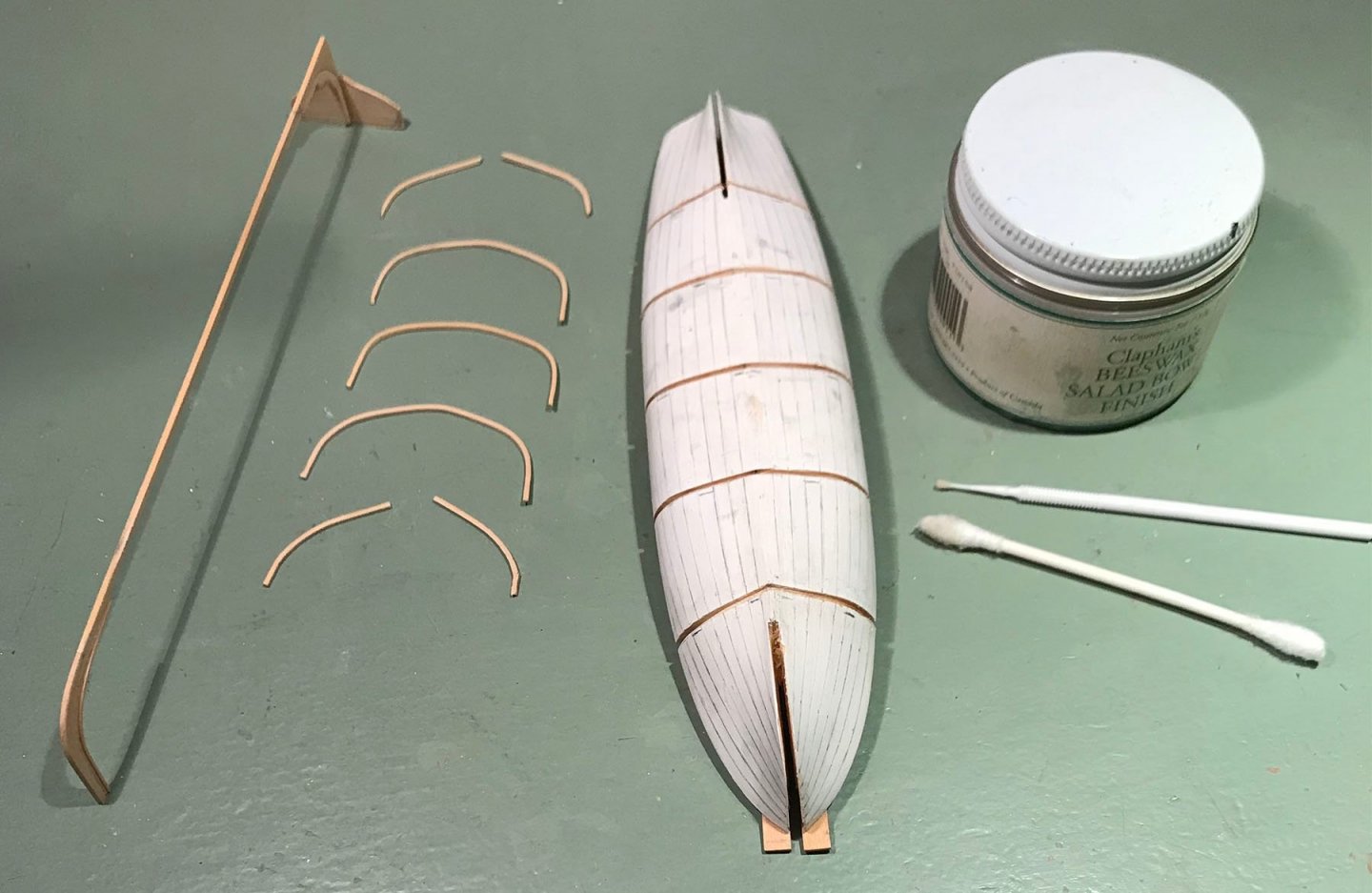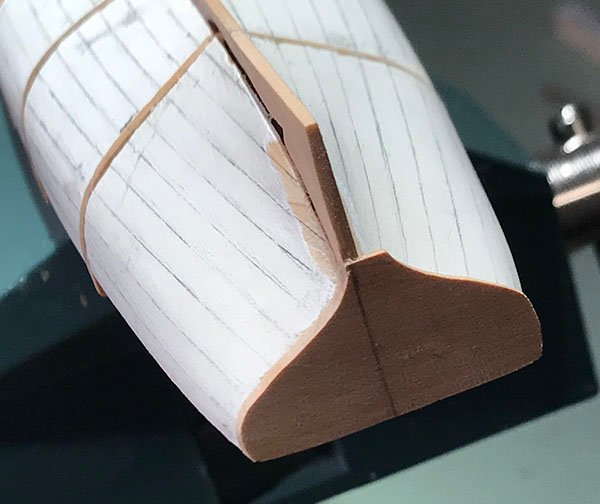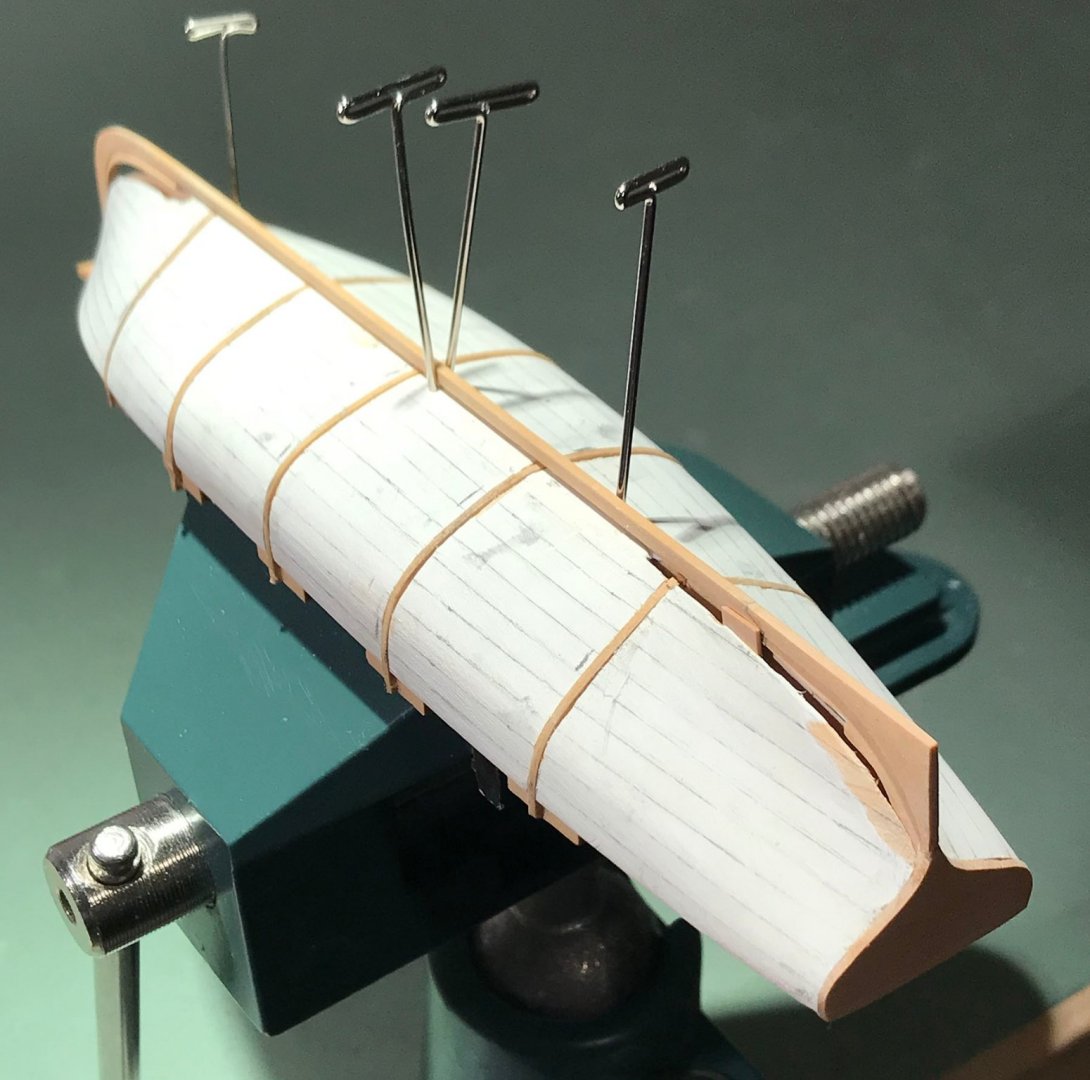-
Posts
13,134 -
Joined
-
Last visited
Content Type
Profiles
Forums
Gallery
Events
Everything posted by druxey
-
I love my Castroviejo corneal scissors (5)! The vintage/antique watchmakers' hand vice (2) is also a really useful tool. Haven't had as much luck with the sliding ring version; it always slips when I don't want it to! Its advantage is that it has small jaws.
-
Keith: You remind me of an anecdote about Oscar Wilde. He was holding forth at some gathering making his usual brilliant remarks, after one of which someone said, "Oh, I wish I'd thought of that!" To which Oscar replied, "You will, my dear boy, you will!"
- 433 replies
-
- open boat
- small boat
-
(and 1 more)
Tagged with:
-
I've not seen pentagonal section broaches here, just the four-sided variety,
-
The two lines of the poem on the banner in the original Cutty Sark stern design read: (And roars out,) "Weel done, Cutty-sark!" And in an instant all was dark.
- 3,560 replies
-
- clipper
- hull model
-
(and 2 more)
Tagged with:
-
Broaches are tapered square-sectioned steel tools that ream out a hole to fractionally enlarge it. One turns them by hand.
-
Odd. The fine Bellona model in the NMM shows the mizen chains as 2 and 4, not 3 and 3 as above. (The block model indicates the same arrangement.) I do know that Polyphemus, 64 guns, had a small stool for the mizen topmast backstays: https://collections.rmg.co.uk/collections/objects/81287.html Perhaps there are other examples to study.
-
Another solution is to enlarge the holes using miniature broaches.
-
Update: planking has commenced! The stock for this was sanded to thickness (1/64") using the Byrnes' thickness sander. That done, I needed to stabilize the keel laterally while applying the garboard strakes. These will make the spine rigid once both sides are in place. I had made the mistake of not doing this once on a previous boat and ended up with a laterally curved keel. Not nice. The twist on the plank 'blank' was done using water and the heating iron. Once it had set, the width at different points was marked, the plank removed and trimmed. It was then glued in place. The aft plank in the strake was processed in a similar fashion. Next will be the opposite garboard. From here on it will be a repetitive process until all 36 planks are in place.
- 433 replies
-
- open boat
- small boat
-
(and 1 more)
Tagged with:
-
Bruce: They will be, very shortly! After the shell is removed, a keelson will also run along the tops of them.
- 433 replies
-
- open boat
- small boat
-
(and 1 more)
Tagged with:
-
So, next was to disassemble things and wax the plug. The grooves for the five frames were waxed using a micro-applicator. Replacing the spine on the plug, I shaped the transom. By filing it to shape this way, the shape and changing bevel is automatically correct. A problem I had with a previous boat was that the keel bowed slightly sideways because there was no groove on the plug. I carefully sighted along the boat and added temporary pins to ensure that it was straight. Finally, the boat is ready to plank! I've been preparing leaves of Castello 1/64" thick - a scale ¾" - for planking. Next will be the garboard planks.
- 433 replies
-
- open boat
- small boat
-
(and 1 more)
Tagged with:
-

Tell Me Why This Is A Bad Idea ( If it is )
druxey replied to Gregory's topic in Modeling tools and Workshop Equipment
The issue is, whether you are a pro or amateur, saw meeting flesh does not discriminate! -
I see you are using a watchmaker's slotting file, Richard. A great tool to have but, may I suggest, not he best tool for cutting scores. Lay the frame flat, as you have done (after marking out accurately) and, in the case of the upper sill, make a downward vertical cut using a very well sharpened chisel. Turn the frame around and make a series of shallow paring cuts to form the score. For the lower birdsmouth make the first vertical cut across the middle of the score, then pare away at an angle toward the middle from each side. Practice on scrap first to get the technique down.
- 30 replies
-
One often is boxed in by thinking 'If the original was metal, I have to use metal to make it too.' No, you don't. Tape is one solution suggested above. Another is very thin card strips, prepainted. I've often used them and a neat joint is easy. Overlay the ends, then cut through both with a very sharp blade to butt join them. Drilling for an eyebolt in card is easy as well.
-
Well, for instance, fitting the garboard accurately at bow and stern is much simpler with two planks. One can focus on a good fit at the forefoot and deadwood separately without concerning oneself with overall plank length. Trimming both pieces last to get a neat butt is comparatively easy.
- 433 replies
-
- open boat
- small boat
-
(and 1 more)
Tagged with:
-
The turning in of your deadeyes looks very neat, Clare.
- 175 replies
-
- hanse kogge
- shipyard
-
(and 1 more)
Tagged with:
-

Framing around a gun port
druxey replied to Don Case's topic in Building, Framing, Planking and plating a ships hull and deck
Just to clarify the above: the two 'slices' together make up a frame pair. However, in some cases (this will drive you crazy) the slices were separated by small chocks to allow more air circulation. -

Tell Me Why This Is A Bad Idea ( If it is )
druxey replied to Gregory's topic in Modeling tools and Workshop Equipment
If your brain even suggests 'Is this a bad idea?', then chances are, that it is! Use inserts for peace of mind, accuracy and bodily integrity. -
You are figuring it out fine, Bob.
- 52 replies
-
- Model Shipways
- muscongus bay lobster smack
-
(and 1 more)
Tagged with:
About us
Modelshipworld - Advancing Ship Modeling through Research
SSL Secured
Your security is important for us so this Website is SSL-Secured
NRG Mailing Address
Nautical Research Guild
237 South Lincoln Street
Westmont IL, 60559-1917
Model Ship World ® and the MSW logo are Registered Trademarks, and belong to the Nautical Research Guild (United States Patent and Trademark Office: No. 6,929,264 & No. 6,929,274, registered Dec. 20, 2022)
Helpful Links
About the NRG
If you enjoy building ship models that are historically accurate as well as beautiful, then The Nautical Research Guild (NRG) is just right for you.
The Guild is a non-profit educational organization whose mission is to “Advance Ship Modeling Through Research”. We provide support to our members in their efforts to raise the quality of their model ships.
The Nautical Research Guild has published our world-renowned quarterly magazine, The Nautical Research Journal, since 1955. The pages of the Journal are full of articles by accomplished ship modelers who show you how they create those exquisite details on their models, and by maritime historians who show you the correct details to build. The Journal is available in both print and digital editions. Go to the NRG web site (www.thenrg.org) to download a complimentary digital copy of the Journal. The NRG also publishes plan sets, books and compilations of back issues of the Journal and the former Ships in Scale and Model Ship Builder magazines.




